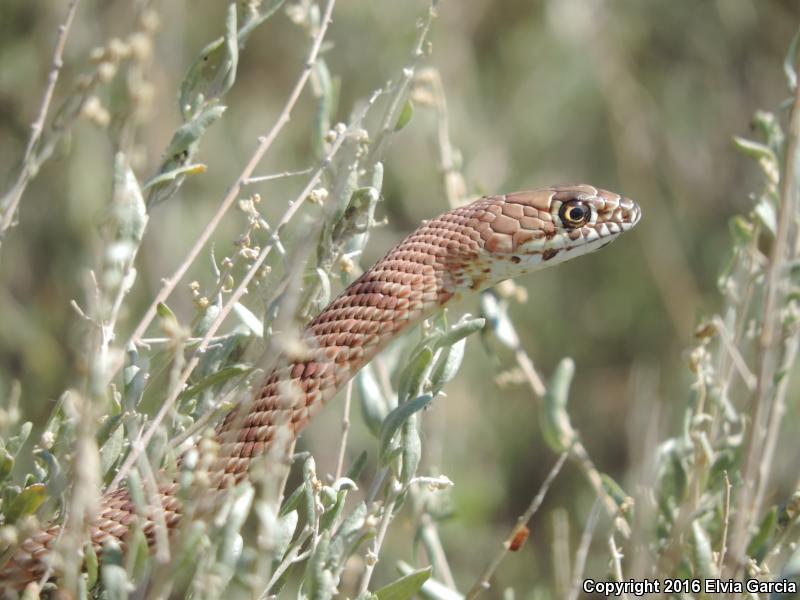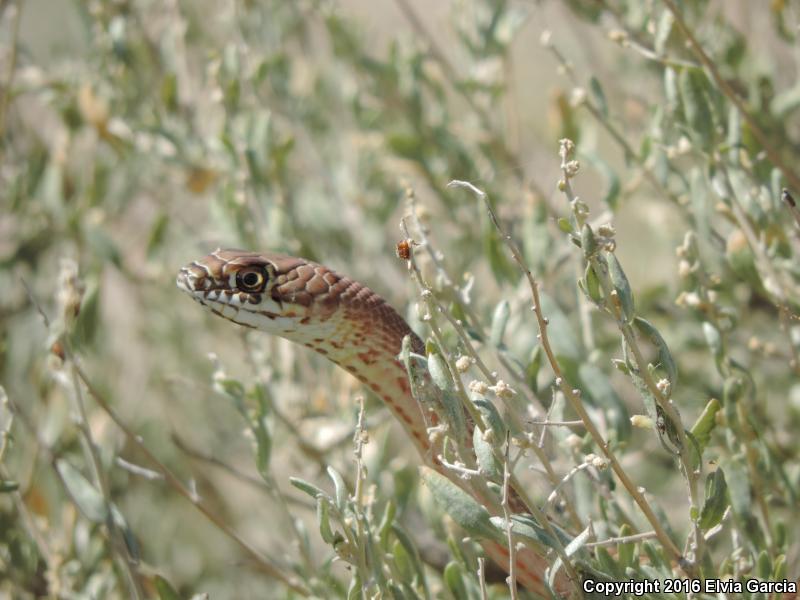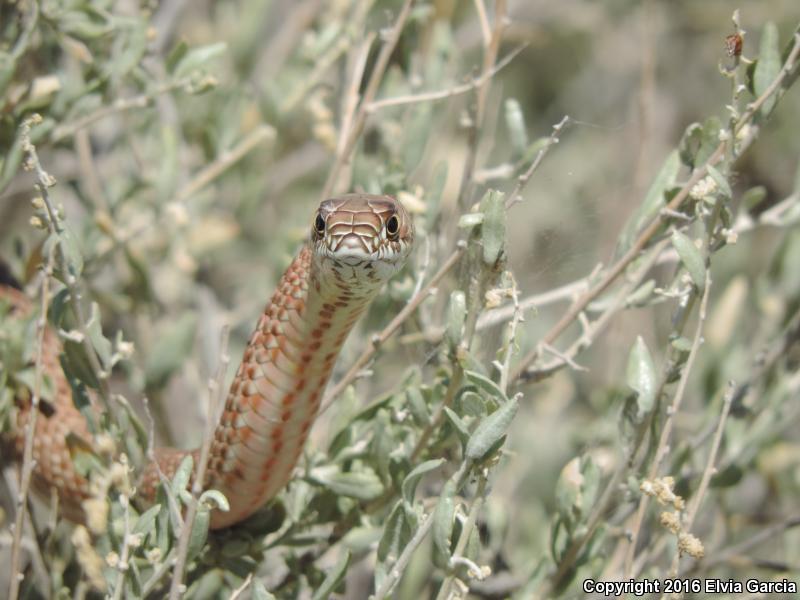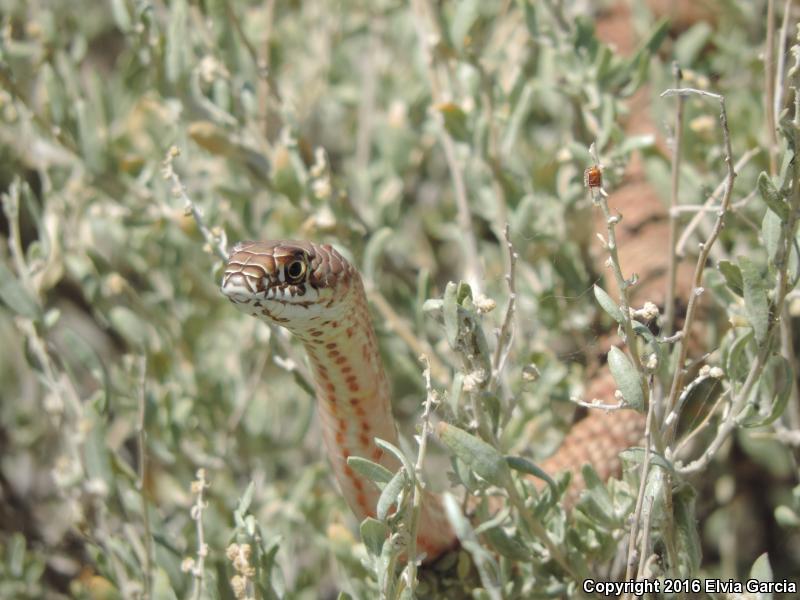San Joaquin Coachwhip (Coluber flagellum ruddocki)
Created: August 27th, 2016 - 03:30 PM
Last Modified: August 27th, 2016 - 03:30 PM Entered by: Elvia Garcia
Record 264380
Last Modified: August 27th, 2016 - 03:30 PM Entered by: Elvia Garcia
Record 264380
|
Country: United States |
State: Colorado |
County: Pueblo County |
Time: 2016-08-27 12:00:00 |
|
|
Qty: 1 |
Age: Sub-Adult |
Sex: -- |
Method: Visual encounter |
Habitat: ----- |
|
Body Temperature: ----- |
Air Temperature: 85.00F |
Ground Temperature: ----- |
Humidity: ----- |
|
|
Sky Conditions: Clear |
Moon Phase: ----- |
Elevation: ----- |
Barometric Pressure: ----- |
|
Notes
Observed this snake sitting on top of a bush. When approached for pictures it did not seem frightened and allowed us to take pictures for at least 15 minutes. After looking it up it matched the description of a San Joaquin Coach Whip, but noticed that those are located in California.
Vouchers









Comments
When searching other postings online we found no western coach whips with ventral patterning, we found some with solid coloring of pinkish to white. The snake that was spotted today had distinctive double lines of squares giving it a checkered appearance.
Huh. Do Western Coachwhips not have ventral patterning?
It has square on its stomach and the same markings on the head which are available to see on the pictures . It was also spotted and posted by a website called Reptiles and Amphibians of Colorado.
They have varying appearance within the subspecies. What specific characteristics match? It's highly unlikely that a San Joaquin Coachwhip was released in that spot, unless there is a known breeding population.
When comparing pics of each it looked exactly like the San Joaquin, it had certain characteristics that the Western does not.
That should be a C. f. testaceus (Western Coachwhip). They range into CO.